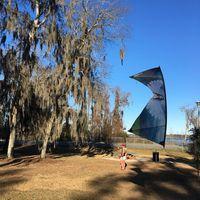Leaderboard
-
in all areas
- All areas
- Marker
- Marker Comments
- Marker Reviews
- Adverts
- Advert Questions
- Advert Reviews
- Articles
- Article Comments
- Article Reviews
- Blog Entries
- Blog Comments
- Files
- File Comments
- File Reviews
- Events
- Event Comments
- Event Reviews
- Images
- Image Comments
- Image Reviews
- Albums
- Album Comments
- Album Reviews
- Topics
- Posts
- Status Updates
- Status Replies
-
Custom Date
-
All time
June 25 2009 - April 20 2024
-
Year
April 20 2023 - April 20 2024
-
Month
March 20 2024 - April 20 2024
-
Week
April 13 2024 - April 20 2024
-
Today
April 20 2024
-
Custom Date
02/06/2017 - 02/06/2017
-
All time
Popular Content
Showing content with the highest reputation on 02/06/2017 in all areas
-
I do not allow lessons taught in forward flight for new people. Why bother, every kite goes forward. The quads are about "control", you must first learn to back the kite up from inverted on the ground, or at the very least "cartwheel" it over to upright again! The are a couple of ways to slow down a kite, but the best way to "control" a kite is thru a big dose of DOWN in the tuning. All the cool tricks and extraordinary team stuff comes from controlled pilot commands to the bottom lines. Oh sure you manipulate your thumbs, but the effect is brake, adding or lessening impact on the flight dynamics. And for everyone laughing at the new Rev Classic (B-series sail & Reflex mechanism combined into one kite), get over it, it is for real and you will own and love one eventually too. A huge wind range that starts with negative numbers! It flies like a dialed in SUL and can work in a team environment when others are on mid-vents. The most significant difference between the original reflex model and this current configuration is that lack of pronounced oversteer. All powered up has a new meaning The line thru the handles on the Reflex grips must be much more securely fastened down, before it is the equal of "no-snags". Wiggling bits and sloppy commands dilute the fun. Maybe yours came different than my, by mine needed some effort to raise their standards. I used two lines, affixed to each other in opposite directions so they pull each other tighter not alternating 'tween loose and tight with every thumb flick2 points
-
And even better news to me, just the actions and movement have made my problem hand much better. Now I don't drop my handle near as often. Big ,huge for me. I do think that the padding might help more if moved almost to the top. But till then i flew for over an hour yesterday with the knots all the way out Sent from my iPad using KiteLife mobile app2 points
-
The B stood for Barresi signature Series.. They took his name off and kept everything else.. I was under the impression is was his panel layout.. @John Barresi is probably the only one who knows for sure.1 point
-
I see from the photo that you hold the handles way up high. I understand that you do that to maintain a better grip on the one that gets away from you occasionally. However, this puts your hands too high and limits the amount of brake control available on the average, limits one end of the range of motion that would make inputs more effective, and actually makes the handles harder to hold onto when the kite is in an inverted hover because you are giving the leverage advantage to the kite. Ideally, your middle finger should rest on the balance point of each handle, the spot that when supported by only one finger keeps the kite stationary and not moving forward or backward. Not criticizing your technique or style, just trying to help with hanging on to the handle. I have old arthritic hands and can sympathize. I have found through my experience that the relatively large diameter of the foam grips that are normally found on the handles makes my hands tired and achy after a couple of hours, and yes, I have dropped a handle several times. The standard foam used is 1-1/8" diameter or 1-1/16" diameter. I found that it's easier for me to hold on to if they are 3/4" to 1" in diameter. You might try experimenting with smaller diameter grips to see if it helps, or possibly making it oval in cross-section.1 point
-
Bringing the bottom lines in has the same effect as letting the tops out. One in on the bottom plus one out on top is the same as two out on the top or two in on the bottom. Technically, you only need one knot on the bottom; all adjustments can be made using only the tops, and is recommended to keep the kite safely "parked" in the inverted position on the ground while you make adjustments. You will understand why when, not if, the kite takes off unexpectedly. Imagine each handle as a straight stick. By moving the knots in or out on the top and/or the bottom is changing the angle of the sticks from this / to this l to this \ when you look at it from the flyer's left side. Of course, when you are flying you are constantly changing that angle, but the point at which the lines are initially set determines the ease with which you can do it, and the range of motion it makes possible.1 point
-
Like Wayne said -- yes. I saw the picture of you and Jynx, and now I can put a face with the name. I'm glad you could hook up with her and the others at TI, and I'll bet you picked up more info than you could process in just a couple of days. It'll come back to you when you need it. Modify your handles as soon as possible; you won't regret it. The TK/JB leaders are really inexpensive for the amount of work that goes into tying them, but while you wait for yours if you're buying a set, you can remove the tops from your handles and untie them so they are not doubled over and therefore twice the length, and retie knots onto the now-single strand. Don't worry, the cord is strong enough to handle the pull. Just leave the bottoms the way they are. Technically, you only need one knot on the bottom; all adjustments can be made using only the tops. Welcome to the family.1 point
-
Maybe some can relate it's much like cutting brakes, or a skid steer vehicle And you're right, I found I needed a little more brake input for a stall or hover. With that adjusting the bottom leader in seems to help precision. Is that the general rule? Sent from my iPad using KiteLife mobile app1 point
-
But don't call it a B-series ... they don't make those anymore It's the not-a-B-series1 point
-
@Wayne Dowler As far as I know it comes with the reflex rods, but can take the standard rods (without springs) which basically makes it a B-series wing.1 point
-
Riverview Park is directly under the flight path for Phoenix Sky Harbor Airport, 8 miles away. It is fun to share the sky with the big birds. Link to the 4k version of this instagram video.1 point
-
Joe - yes it works even though you think it shouldn't. And the more you get used to that feeling, you will learn to get enough speed from things. Even my play time is usually centered around thoughts of team flying. Practicing moves that help me learn and hone my team skills.1 point
-
1 point
-
Hello i met jinx today she took a picture of us together. Question when you buy the handle leaders from JB do they come in a pair top and bottom left and right. Sent from my iPhone using KiteLife mobile app1 point
-
but at the same time you lose the fine control that many of us like about them. Being a team flier mostly, control is a very sought after thing! Speed is secondary in our needs. More important is the ability to launch and hover, more than straight line speed. If you just fly solo - pretty much anything goes, but in team flying - every one must play together!1 point


.thumb.jpg.53aabc63a639af8d375b2c92cf2e13f8.jpg)


